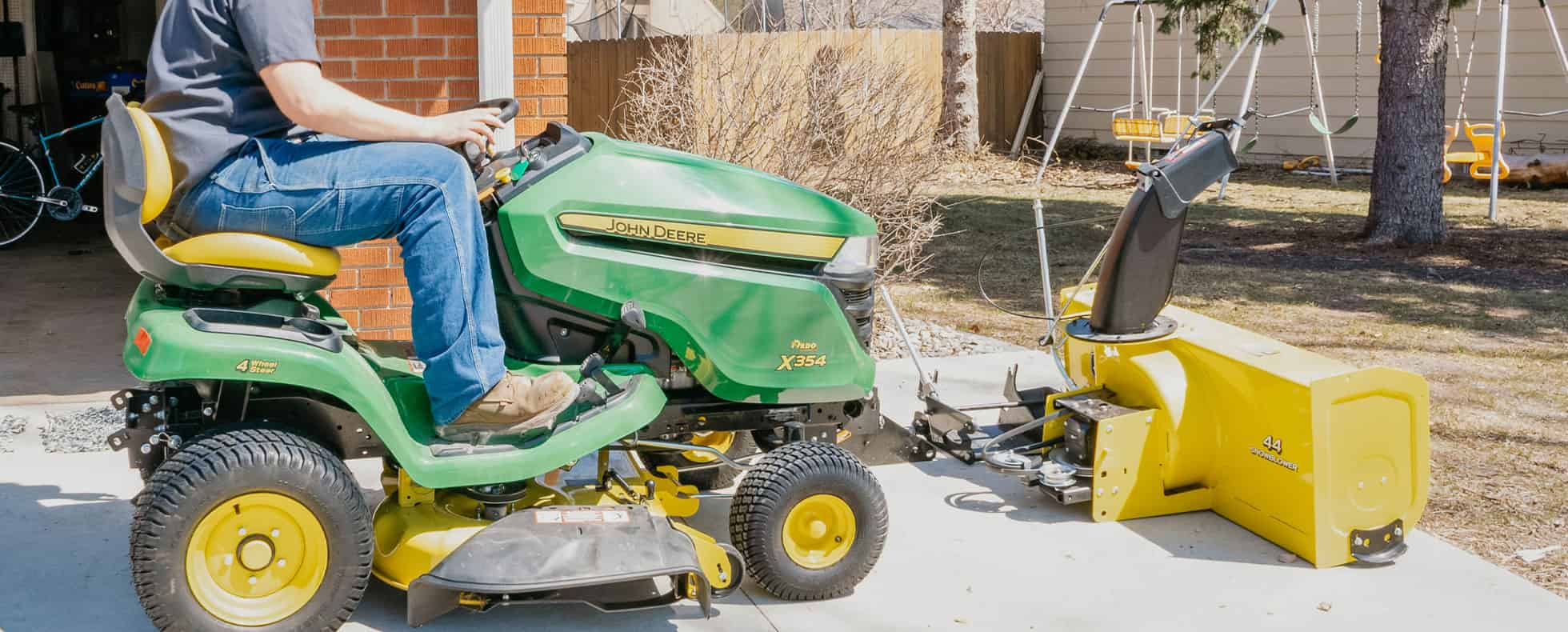
As the weather warms up after that last random spring snowstorm, it’s time to start thinking about your best ideas for snowplow and snowblower summer storage. One of the most important elements of proper maintenance for your snow equipment is knowing how and when to put it in summer storage. Improperly storing your equipment can mean a headache when it snows without warning next season. And by storing it correctly you can save money on costly repairs and help keep your snow equipment working for years to come.
Before putting your snow equipment in storage, make sure that you are mindful of all fluids. Your snowblower should not be stored with fuel in the engine, while for hydraulic plows, you need to make sure that the levels of hydraulic fluids and oils are at the maximum so that there is no air in the system.
With a snowblower, remove your spark plug, pour a few drops of oil into the combustion chamber, and pull the cord a few times. This will lubricate the cylinder wall and piston. Once the lubrication is complete, replace the spark plug and continue to pull the cord until you feel resistance. This will make sure that the piston is sealed to the chamber and will prevent moisture from getting into the engine and potentially causing corrosion.
For your plow, keep your hydraulic systems in good condition and put the blades into their resting position. For a straight blade system, angle the blade completely. The idea here is to put as many of the pistons inside the cylinders to protect them from corrosion. Any exposed cylinder rod should be coated with a spray-applied grease for protection.
Your electrical connections may also be exposed to moisture during the storage period. They should all be cleaned and covered with dielectric grease for protection. Be sure to remove any dust, dirt or buildup before applying the grease.
If metal components are left in storage with salt and other stains present, they can easily suffer corrosion over the summer months. It is vital to make sure your equipment is thoroughly washed to remove salt and other corrosive materials. For a snowblower, take a warm, wet shop cloth and wipe down any open surfaces. For a plow, you can use a garden hose to remove any particles. Once the surfaces are dry, spray your engine with an engine storage spray, and for your plow, use a rust preventative spray.
Whether you’re storing a snowblower in your garage or finding room for your plow in a shed, indoor storage is important for this type of equipment. It is recommended that snowblowers are covered with a breathable cover to avoid dust and dirt settling in the engine. For a snowplow, you do not want to cover them, because moisture and condensation can cause rust and corrosion.
It is recommended that all snow removal equipment is stored indoors and out of the elements during the off-season. Whether this is a shed, garage, barn or basement, it is best to have the equipment on a cement floor or off the ground on a mat. Again, this is about keeping the equipment out of the elements to keep dirt and dust away from movable parts or engines.
If you don’t have room, or don’t want to waste valuable space in your garage storing snowblowers or other snow removal equipment, a good tip to know is that you can rent and put snow equipment in a self-storage unit.
It is vital to protect your investment when owning any snow equipment. These tips will help you prepare your equipment, but it’s also important to check the repair or maintenance section of your user’s manual to see if your specific equipment has further instructions. No one wants to be surprised by equipment that has rusted or is inoperable when the first significant snowfall arrives next winter.
If you are looking for snowblowers, rotary brooms, front mount snowblowers, or plow blades, RDO Equipment carries John Deere and other models to meet your residential and commercial snow equipment needs.